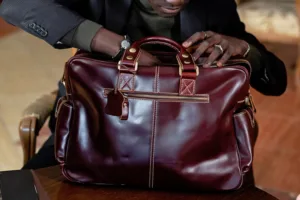
Geographically, Kenya is a diverse country that features landscapes ranging from high mountains to plateaus, savannahs, and low-lying coastal areas. As with packing for a trip to a geographically interesting country like Kenya, what to pack when traveling to Kenya will depend on both the part of Kenya you are travelling to and the purpose of your trip.
Most people who come to Kenya from abroad come to tour and love to visit the Safari. While some relocate. Whether you are traveling for an adventure, a business trip or to live permanently in Kenya, this article will help you know what to pack, and what not to pack when travelling to Kenya.
What to pack for Kenya
Let’s talk about the most important things to pack first.
Travel documents
- Visa
- Passport, with at least 6 months validity
- Flight ticket
- Travel itinerary
- Travel insurance
- Proof of yellow fever immunization
- Health record and emergency contact information- in case of a medical emergency
- International Driving Permit (if you plan to drive during your stay)
What to wear in Kenya
When packing your clothes for a trip to Kenya, you want to pack clothes that are both culturally appropriate and weather-friendly. You are discouraged from wearing revealing clothes in Kenya as this would be considered culturally disrespectful and inappropriate.
Pack:
- Underwear
- T-shirts and shirts (both long- and short-sleeves):
I like that shirts are versatile when styled correctly and will make it easier for you to travel light. With one shirt, you can easily switch from looking business-ready to safari- or beach-ready just by changing your bottoms.
3. Bottoms such as pants/ trousers, skirts
4. Swimwear: wear this only on the beach/ swimming pool areas and cover up outside.
5. Light jacket: it could get cold in the evening and night, especially in the plateau areas.
6. Accessories such as ponchos, pashminas, scarves, wide-brimmed hats, and sunglasses for sun protection. If you are a woman, you’ll need to cover your hair when going to a mosque. You can use a pashmina or scarf for this.
7. Raincoat, if traveling during the rainy season which is usually between mid-March to May and November- December.
Generally, because Kenya has a tropical climate, lightweight, breathable, and loose-fitting clothes are best.
Footwear:
Flip-flops, sandals, running shoes, walking boots, and hiking shoes (in case you decide to go hiking as there are lots of wonderful hiking trails to explore in Kenya) are best suited for Kenya’s terrain. If you have formal events or business meetings to attend, don’t forget your formal shoes as well.
What to wear on a Safari in Kenya
For a visit to the safari, tour guides usually advise against wearing bright colours and recommend wearing colours that blend in with the natural surrounding such as khaki, beige, brown, grey, and olive. This is because bright colours often attract tsetse flies and scare away the animals.
Aside from the colour considerations, your safari packing list can consist of anything you want as far as they are comfortable and modest. Long-sleeve shirts, t-shirts, shorts, loose-fitting pants, wide-brim hats with chin straps, bush jackets, rain jackets, and walking boots are your best bet for a comfortable safari experience.
What not to wear in Kenya
As much as it is important to know what to wear during your trip, it is also important to know what not to wear for your safety. Don’t wear the following:
- Military/ camo clothes: you could get arrested for this!
- Tight clothing, mini-skirts, and other skimpy clothes (we’ve talked about why earlier)
- Expensive jewellery: if you are not 100% sure of the security of the places you’ll be visiting when in Kenya, don’t take your expensive jewellery (or anything you wouldn’t want to lose).
Toiletries
You can get toiletries in Kenya, but I advise you to pack the following:
- Sunscreen
- Lip balm
- Deodorant
- Body cream
- Travel tissue
- Face wash
- Hand sanitizer
- Hand moisturizer
- Toothbrush and toothpaste
- Insect repellent, very important
- Panty liners, sanitary pads/ tampons
- Travel-size shampoo and conditioner
Medication and first aid kit
Although there are pharmacies, and accommodations will (ideally) have a first aid kit, traveling with yours is highly recommended. Your first aid kit should contain the following:
- Prescribed medication, if any. Come with enough to last for your stay.
- Pain relief medication, ex: Ibuprofen, Panadol.
- Antihistamine cream or tablet
- Malaria prophylactics
- Anti-bacterial wipes
- Anti-septic ointment
- Sterile gloves
- Skin rash cream
- Cotton wool
- Plaster
- Balm
- Bandage
Gadgets
As a basic need, you should travel with your phone, type G travel adapter, power bank, headphones, and laptop. If you’re going sightseeing and you’d love to capture the moments, consider adding binoculars, a camera, and a tripod stand. Don’t forget to take care of your gadgets by packing them in a padded, waterproof, gadget organizer.
Other things to pack when traveling to Kenya
- Cash and bank card
- High-beam headlamp and flashlight: if you’ll be camping, you need good lighting.
- Reusable water bottle and portable water purifier
- Journal for documenting your experience
- Towels, for cleaning your body
- Books to read.
Read also: What to carry when travelling to the UK from Kenya.
What to pack when travelling to Kenya FAQs
What plug sockets are used in Kenya?
Type G. The electrical system in Kenya functions with a voltage supply of 240V and operates at a frequency of 50Hz.Top of Form
Are Ziploc bags allowed in Kenya?
No, they aren’t. In 2017, the Kenyan government banned single-use plastic bags, and this includes Ziploc bags.
How do you pack toiletries for Kenya?
A quick-dry, waterproof toiletry bag is great for packing your toiletries for any trip, not just Kenya. It will help you keep your toiletries within the recommended travel-size limit, and prevent liquid toiletries from spilling onto your clothes if there’s any spillage.
What colour not to wear on safari in Kenya?
Don’t wear black, white, and bright colours.
Conclusion
You can adjust the packing list I have shared above to suit your travel needs and the duration of your stay in Kenya. I like to pack light, and I encourage people to travel light as well because dragging heavy luggage around isn’t fun.
You may have noticed that some suitcases are heavier than others. To help you keep your luggage within the luggage allowance, get a lightweight suitcase. Preferably, the type that has multiple handles/ carry straps (in case one of them spoils).
Do you have any contributions or questions on what to pack when traveling to Kenya? If yes, please share in the comments section below.
Please note that Miles & Waves is a participant in the Amazon Services LLC Associates Program. As an Amazon Associate, we may earn commissions from qualifying purchases made through links on this site. Please note that this comes at no extra cost to you. The earnings help support and maintain the blog, allowing us to continue providing valuable content and recommendations. Your trust is important to us, and we only recommend products and services that we genuinely believe will be of benefit to you.








